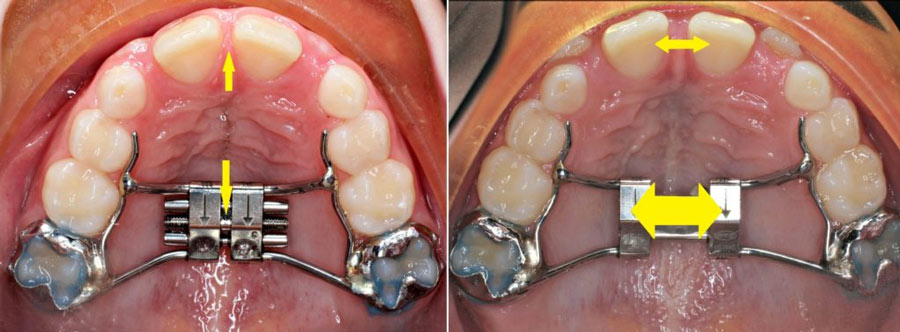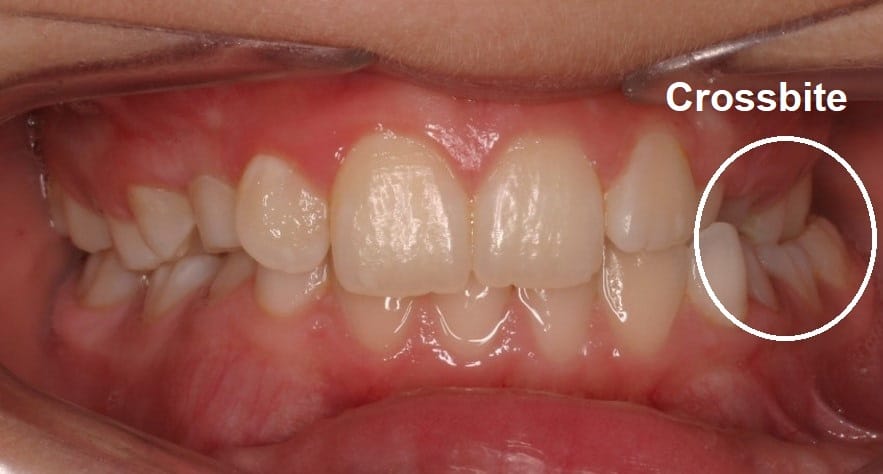What is the difference between Early (Phase I) Orthodontic Treatment and Traditional (Comprehensive) orthodontic treatment?
Why would my child need Early Treatment? How will early treatment benefit my child in the long run?
These are just a few of the questions surrounding the topic of early orthodontic treatment for children. The American Association of Orthodontists recommends that all children see an orthodontist by the age of 7. While most children will not need treatment at this age, it is best to allow an orthodontist to evaluate your child by age 7. This allows any potential issues to be identified and discussed. Often simple and early treatments may prevent more complex problems later. If no treatment is needed at this age, the proper recall time can be identified, so that the ideal comprehensive treatment window is not missed.
Phase One and Phase Two Treatment
If early treatment is needed (also known as Phase One), it typically begins between the ages of 7-9. (Phase Two/Comprehensive treatment will usually begin around the age of 11 or older). At Great Neck Orthodontics, we only recommend Phase I treatment for situations that if left untreated, can cause irreversible conditions, or for dental problems that cannot be addressed properly in an older, more developed patient. Phase I treatment is often recommended for crossbites, underbites, severe protrusion of front teeth that increases the risk of dental trauma, and severe crowding that that may lead to impaction of adult teeth. Many of these problems are related to improper jaw growth (too much or too little). Jaw growth can only be addressed in the Phase I window, before most of the jaw growth is complete.
Phase I treatment is usually less than 1 year long(often 8-10 months). A retainer is then recommended for nightly wear while your child grows and loses more baby teeth. This inbetween/rest time often lasts 1-3 years until most adult teeth have erupted. Most children who had Phase I care will still need Phase II/Comprehensive Orthodontic Treatment (ex. Full Braces) in the future. Early treatment allows for a more ideal result and a more routine second phase because of the early intervention.
How to tell if your child may need early orthodontic treatment:
- Teeth that don’t come together in a normal manner (improper bite)
- Shifting of the jaw when your child opens or closes his or her mouth (crossbites)
- Early or late loss of baby teeth (your child should typically start losing teeth around age five or six, and will have all permanent teeth around age 12)
- Difficulty chewing and/or biting
- Mouth breathing
- Your child continues sucking his or her thumb after age five
- Speech issues
- Protruding teeth (the top teeth and the bottom teeth extend away from each other)
- Severe crowding
Most Common Early Treatments
Palate/Maxillary Expansion: When your child’s upper jaw (maxilla) is too narrow in comparison with the lower jaw (mandible), it often leads to a crossbite, where the lower teeth sit outside the upper teeth. This can present on one side or both sides of the mouth. If left untreated, this can lead to jaw/facial asymmetry and severe crowding. A palate expander is a device that works best in younger children to help the deficient upper jaw expand, so that it will fit the lower jaw properly. Parents are instructed on how to turn/activate the expander daily. The turning typically lasts for about 1 month, followed by a 6 month holding period where the expander is not turned anymore. The expander is kept in to build stability. A significant space will appear between the top front teeth during proper expansion and is often beneficial to a crowded mouth. A limited/temporary set of top, front braces will often be placed for a few months after expansion, to close the gap created and to align the front teeth.

Space Maintenance: If your child prematurely loses any baby teeth or needs them extracted early by your dentist for any reason, having a space maintainer placed may be necessary to prevent future crowding. Some children who have severe crowding may also benefit from a space maintainer, even if they have not had early tooth loss. In this situation, a space maintainer may prevent the crowding from becoming more severe in the future.

What causes orthodontic problems, and how will early prevention benefit my child?
Orthodontic problems such as crowding, too much space, jaw growth problems, protruding teeth, and bad bites can result because of several reasons. Some of these problems are due to genetics, an injury to the mouth, early or late loss of baby teeth, or even a thumb/finger-sucking habit.
Most children lose all their baby teeth by age 12/13. By the end of their teen years, the jaw bones will be fully formed and do not continue growing. Orthodontic procedures for adults may take more time and cannot benefit from jaw growth that can aid in adolescent treatment. Receiving early orthodontic treatment as a child can help prevent the need for orthodontics as an adult. It also decreases the likelihood of extractions or jaw surgery being needed in the future.
If your child is between the ages of seven and eight, and is showing signs of needing orthodontic care, or if you have been directed by your family dentist to visit the orthodontist, please contact our practice and schedule an appointment. Consults are always complimentary! Our team will provide your child with an initial exam, and discuss with you the best steps to take toward caring for your child’s smile!
